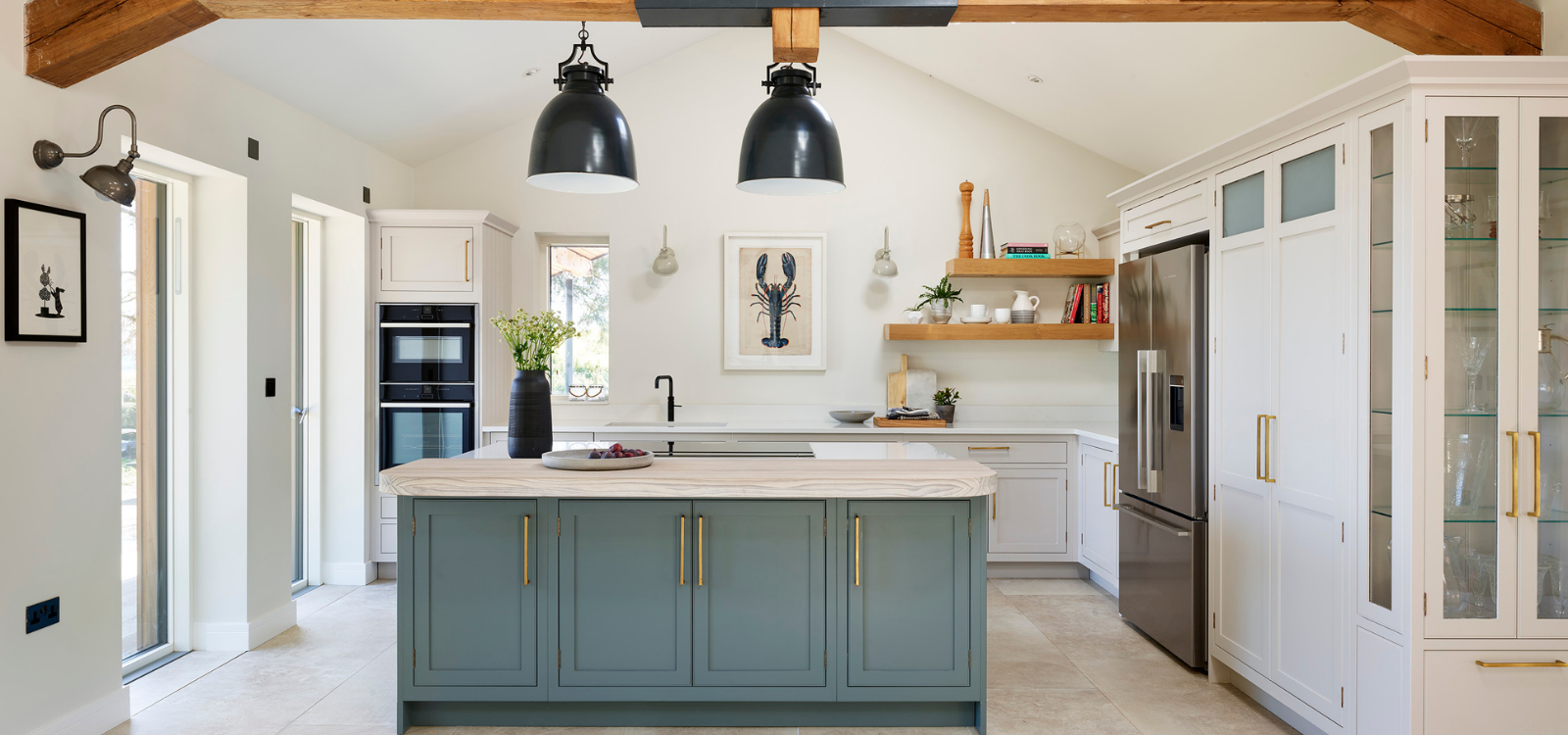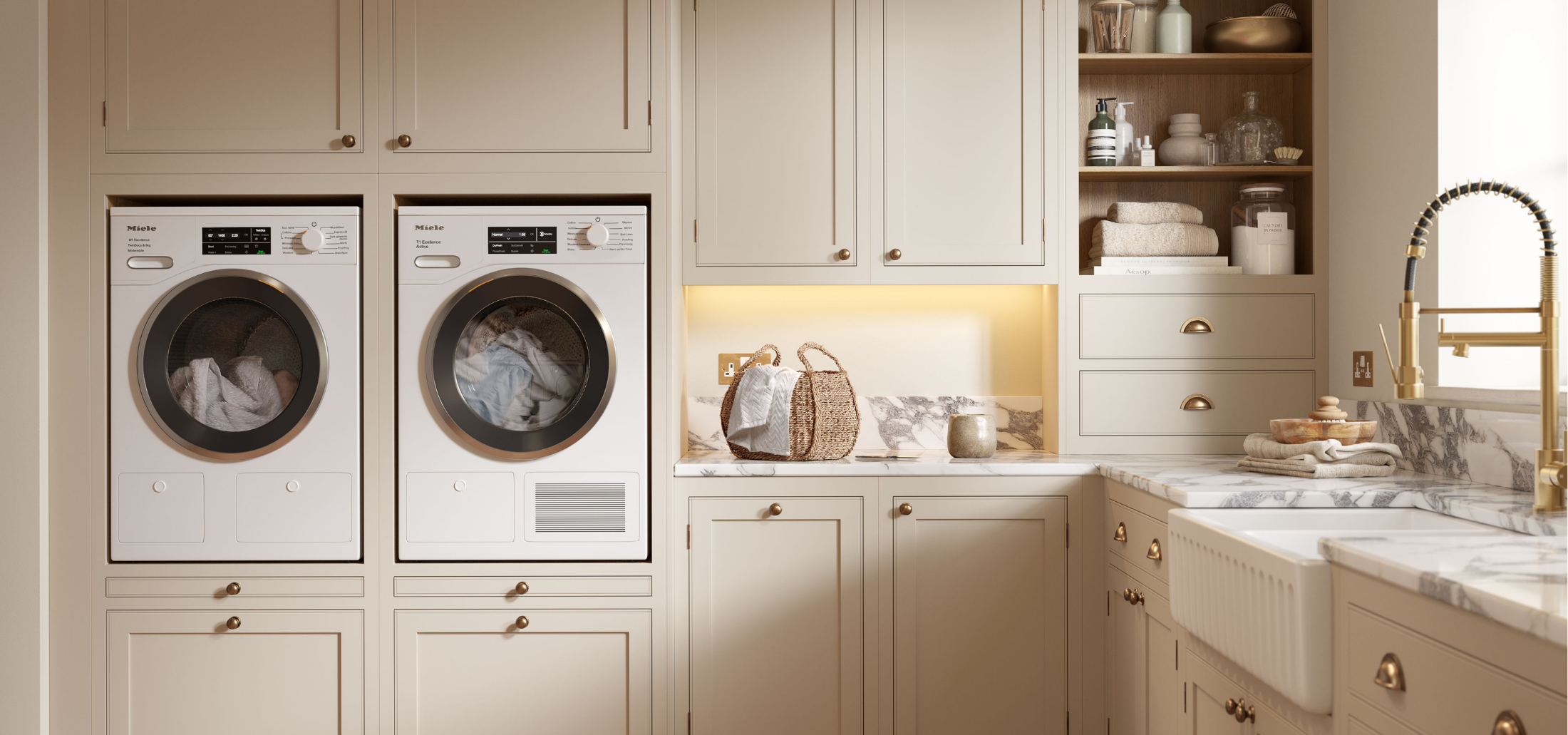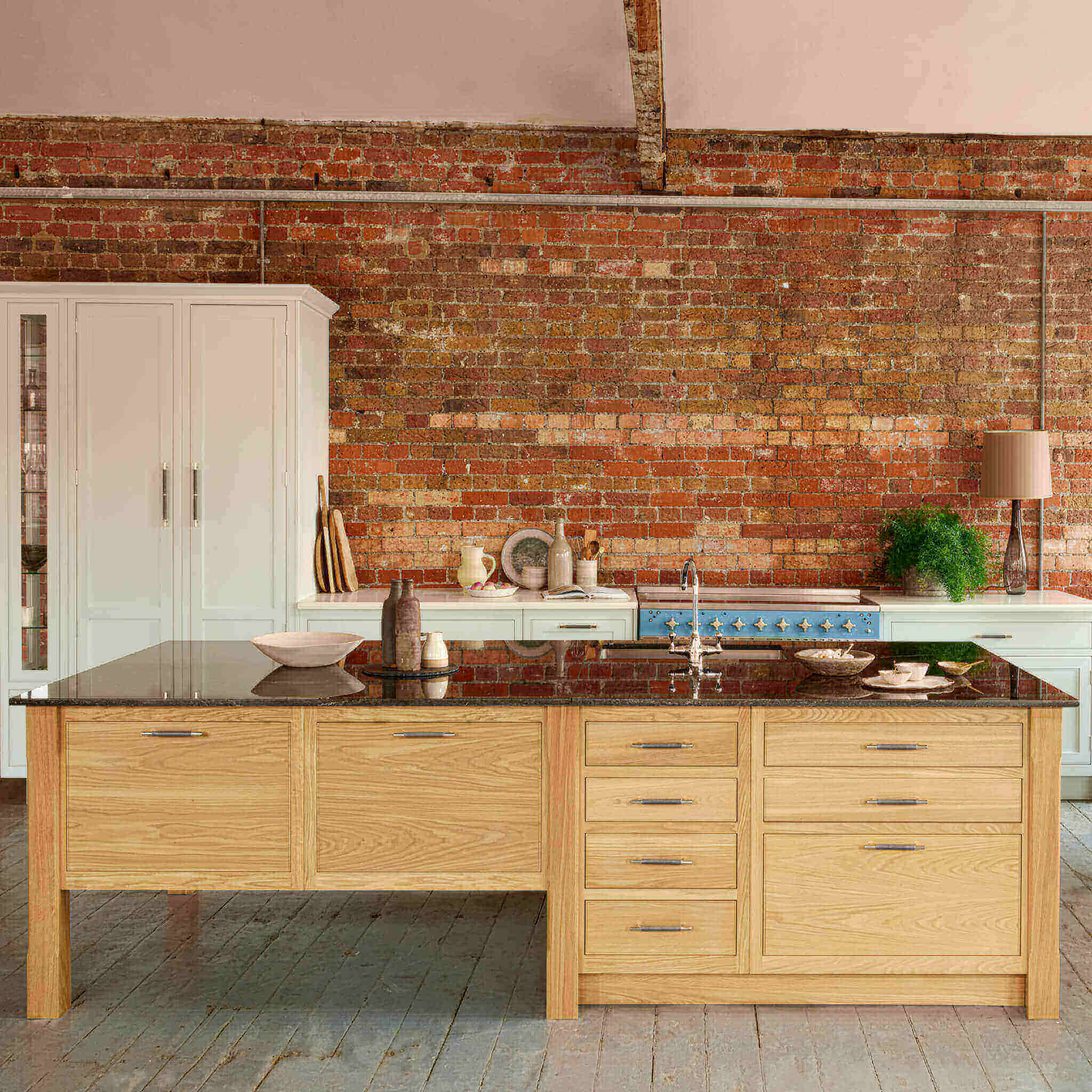
Although it’s true that every single part of a kitchen should equally balance practicality with beauty, nowhere is that more true than with worktops. They are the real workhorses of the kitchen, getting more use than almost any other element. They’re also on show all the time, so need to top off your cabinets beautifully, too.
The kind of material you choose will largely depend on a combination of aesthetics – the style of your kitchen cabinetry will often dictate which surface you opt for – and price. As well as the material and colour, depths and profile edges should also be considered. A more curved profile will suit traditional schemes while thinner depths and shark-nose edges look sleek in contemporary designs. Finish is also an important consideration and it’s as well to look at several options and how they work in your space before making your final choice. A polished surface will help to reflect light around the room, while a matte surface works well in more modern designs but can mark more easily so it’s not always the best choice for a busy family kitchen.
To ensure a perfect fit, most surfaces will require templating and cutting off-site to incorporate holes for sinks, taps and hobs, which is done once the cabinets are in place, so you should always be aware there will be a delay between the installation of your cabinetry and your surface, although often temporary worktops can be fitted so you can use the kitchen during your wait.
WORKTOP MATERIALS
Natural Stone
The most practical stone, because of its hardness is granite. It comes in a seemingly endless variety of hues and patterns but it should be remembered that this is a totally natural material and no one slab will look exactly the same as another. A small sample will give you an idea of what variations will be in the stone but don’t opt for this if you’re after a totally consistent colour and pattern. Granite is weighty and rarely comes in lengths of more than three metres, so if you have a long run, or a wide island it will probably require a join somewhere. Designers will be able to work out the best place to have worktop joins, and a good stonemason will ensure it doesn’t look too obvious. To reduce the weight, opt for a thinner worktop or, for a chunky look without the weight, go for a built-up, double-height edge rather than a thick slab.
Timeless Timber
There are a huge number of different woods that are great for kitchens – ranging from pale maple, with its antibacterial properties to hardwoods such as oak and even more exotic and highly grained options such as wenge and zebrano. Although some woods will require no templating, they will need regular maintenance – oiling to keep it watertight particularly and to prevent stains. Any small marks can always be sanded out if necessary, too. The moisture around a sink means it’s best not to fit wooden worksurfaces next to one unless you’re up for regular bouts of oiling it to prevent water stains. This is where mixing and matching often comes into play – using composite on wet areas and warm timber on top of islands for instance.
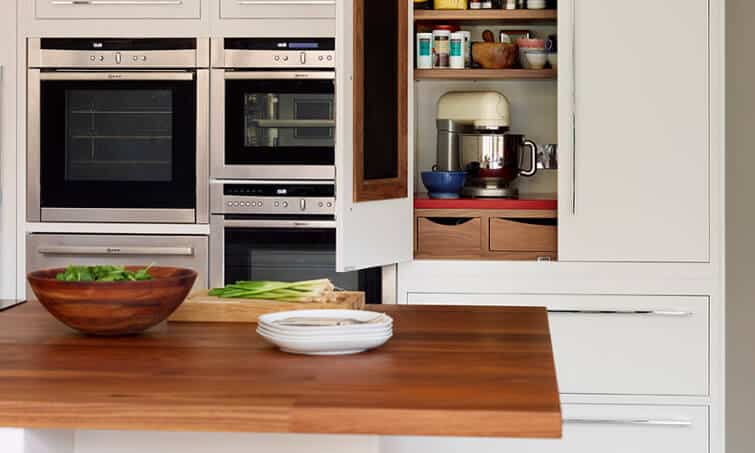
Clever Composites
Composite tops – a mixture of quartz stone and resin in varying degrees depending on the type – are increasingly popular in today’s kitchen designs. Providing a more consistent colour and pattern (although there can be variations from batch to batch), look for ones that have a high percentage of quartz for the best results. The technology for creating faux stone patterns has improved enormously and there are now stones that can replicate beautifully the look of marble, for instance. Most composites, such as Silestone, Caesarstone and LG-Himacs come in large sheets, sometimes of more than three metres and can be joined almost seamlessly. No sealing is required as they are non-porous but it’s best, particularly with pale colours, not to place hot pans directly on the surface. Corian is a composite that’s made up of minerals and acrylic so, unlike quartz tops, it can be thermoformed into more interesting shapes, including seamless sinks and curved waterfall edges to islands. If you’re a keen cook and are after something super-tough then Dekton is a relatively new material that’s scratch- and impact-resistant and formed of slabs that can be cut into curves.
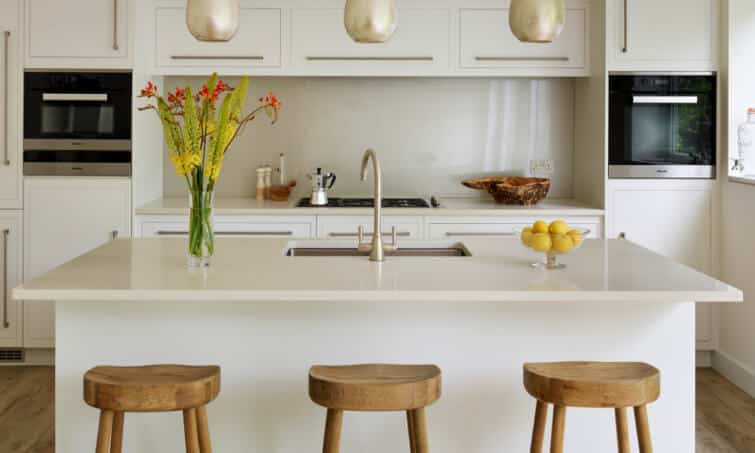
Modern Laminates
A good budget option, the latest high-pressure laminates are a world away from their 1970s predecessors. Advances in technology mean they are not only tougher, they’re also more beautiful, coming in a huge array of colours and faux patterns for a realistic wood or stone effect. They’re more susceptible to extremes of temperature though so would always require the addition of a trivet for hot pans and should be used carefully in wet areas.
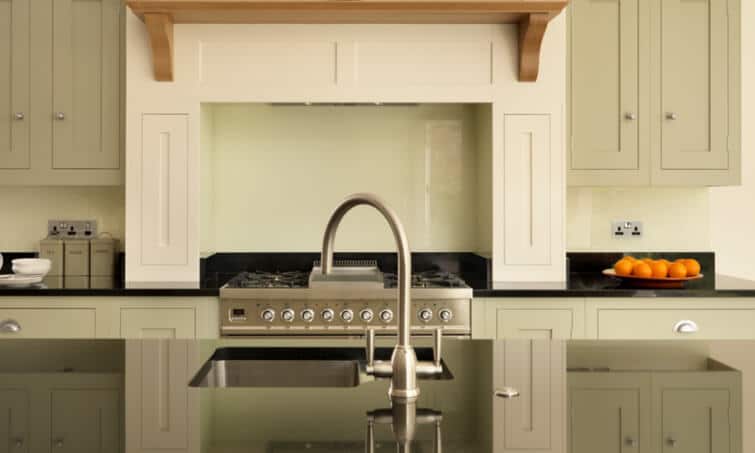
The New Kids
For modern designs, cast concrete can be a stunning choice. However, it can be heavy and has to be mixed and poured on-site, requiring a couple of weeks to completely set before polishing to a smooth finish, so is a longer process. It’s porous, too, so will need regular sealing to prevent staining. Porcelain and ceramic are very strong. They can be formed into highly durable, super-slim surfaces and they are scratch-, stain- and heat-resistant and are very low maintenance as they are non-porous. Joins between slabs are virtually non-detectable and they can be cut with very precise, slim edges, too. Generally, though, this means they are more expensive than composites or natural stone.
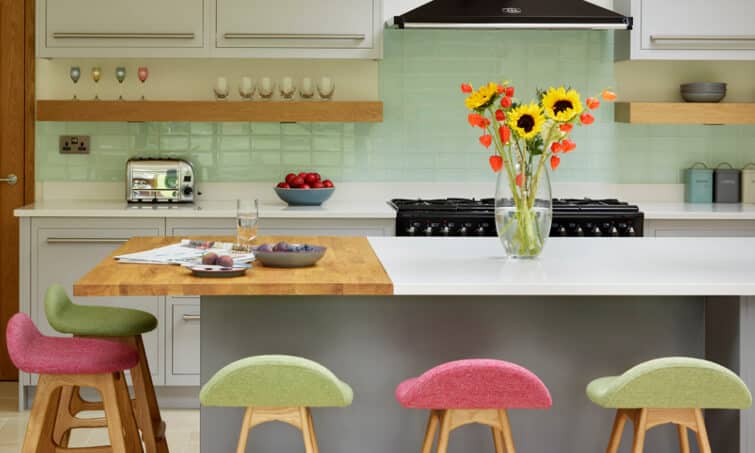
Our showrooms have a range of worktop choices on display which our designers can go through with you. Speak with one of our designers on 0800 389 6938 or book a complimentary design consultation.
Find your nearest Harvey Jones showroom here.


